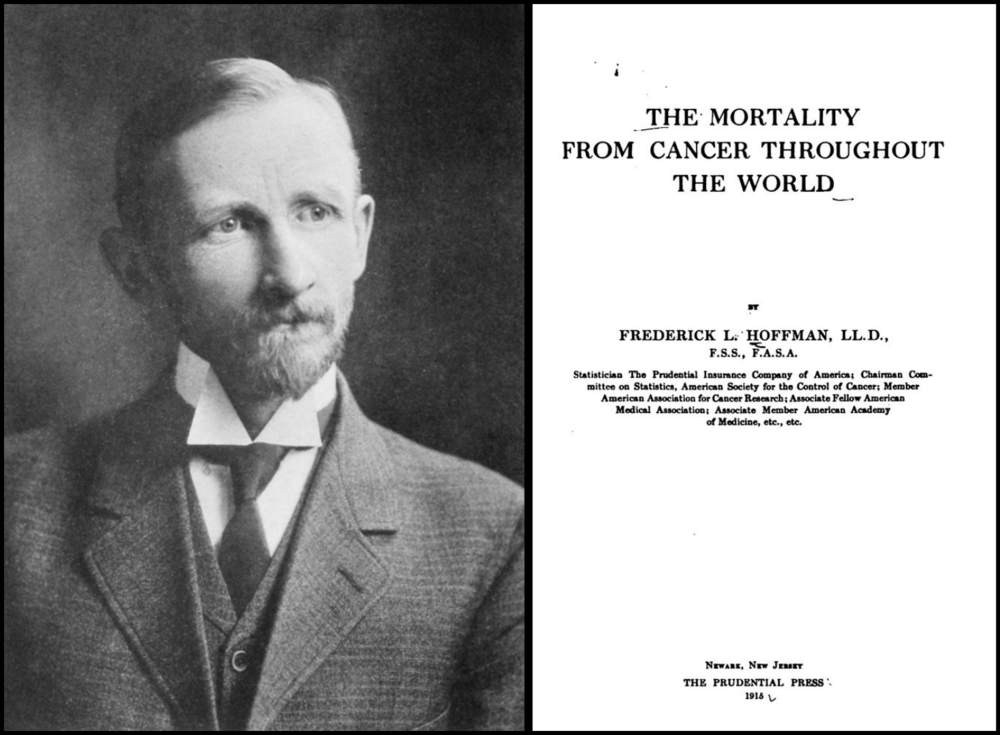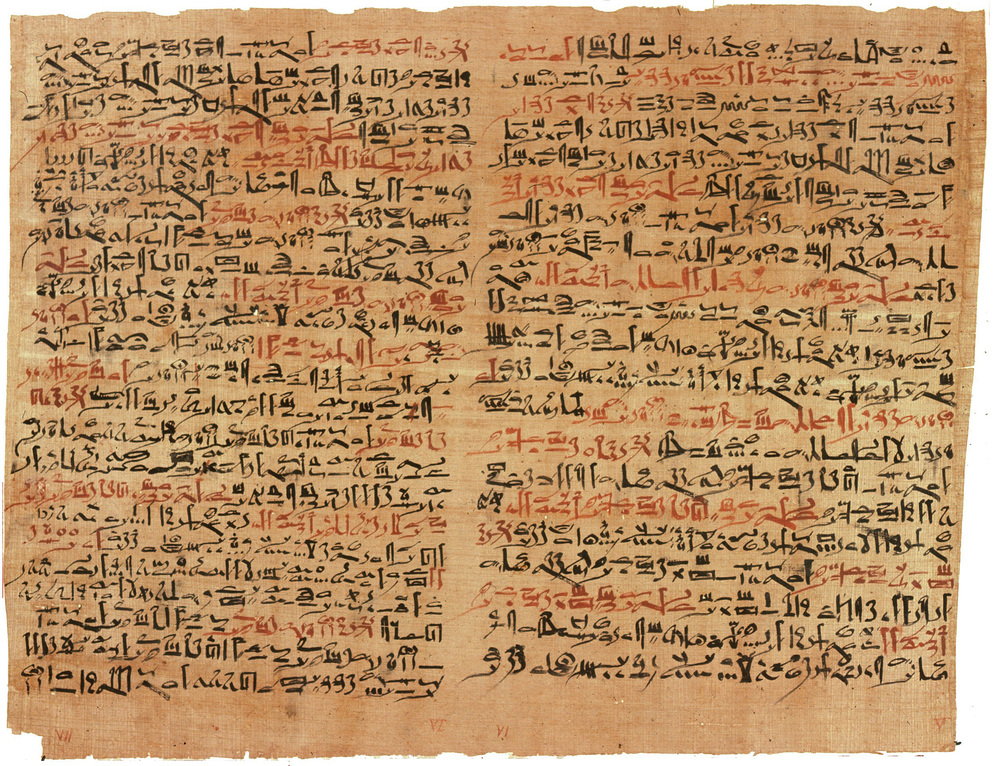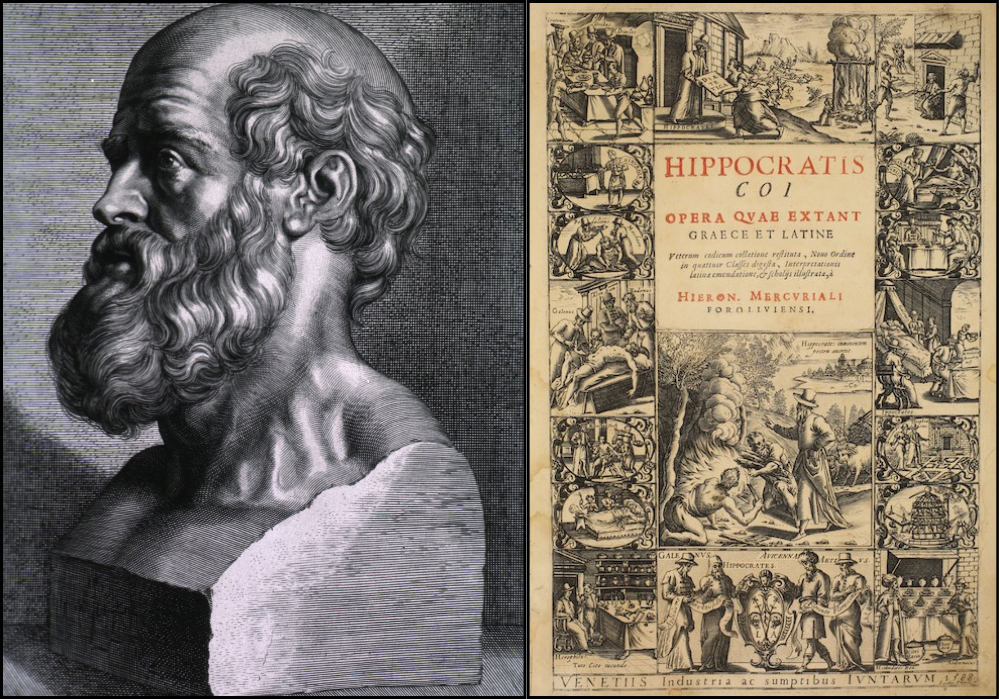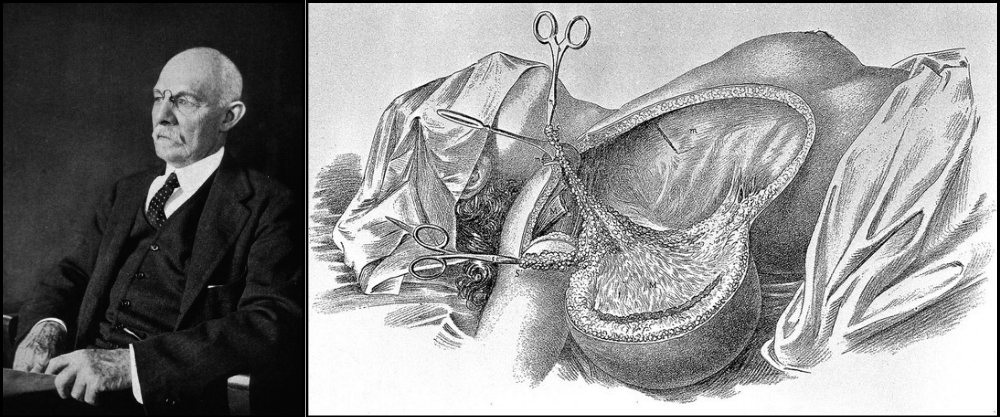A Menace to the “Civilized” World
The menace of cancer is a worldwide phenomenon, affecting more or less alike, all civilized countries.
– Quote by Frederick Hoffman taken from his speech “Cancer Problem of Canada,” given at the Ontario Health Officers Association, Toronto, 1925

(Left) Portrait of Frederick Hoffman, 1909 (Right) Cover page of the Prudential’s report concerning cancer, 1915
At the turn of the 20th century in North America and Europe, a marked increase in deaths linked to cancer had people worried. Frederick Hoffman, Head Statistician at the Prudential Insurance Company, was one of the first to sound the alarm. In 1915, he published The Mortality from Cancer throughout the World, in which he explained that cancer was a growing global problem.
Yet cancer was not a new disease. The first recorded case of the illness dates back to Ancient Egypt; whereas the term “cancer” to describe localized tumours and the swelling of tissues was first used in Ancient Greece. In Hippocratic writings, the term karkinos or karkinoma meaning “crab” (cancer, in Latin) was used to describe the disease. The term was chosen in reference to the shape of the swollen veins surrounding breast tumours. In the 19th century, progress in medical science, like the use of microscopes to observe diseases, allowed doctors to diagnose cancer with greater precision.
Despite these advances, the root causes of cancer remained mysterious, giving rise to all kinds of alarmist theories. For example, Toronto doctor John Ferguson from claimed that the lifestyles prevalent in “civilized” countries were more conducive to the development of cancer. Others went as far to say that the disease was a sign of Western civilization’s downfall. Conflicting ideas, revealing of the racist tendencies of the upper-class, turned cancer into a social problem as well. The issue was made even more important by the fact that the medical community had very few resources, if any, to tackle it effectively.
At the time, only the most aggressive surgeries would prove useful to fight cancer. However, the drastic nature of such procedures was driving many patients away from treatment altogether. The revolutionary medical properties of a new radioactive element offered a glimmer of hope to doctors everywhere in what until now appeared to be a losing battle.




